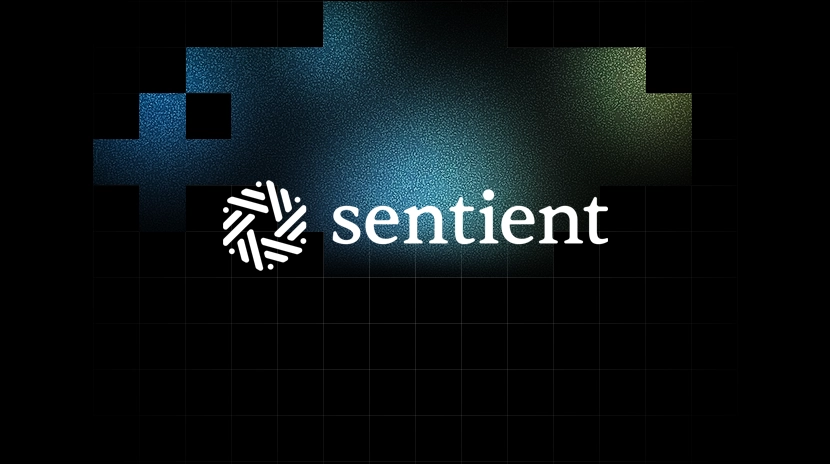
ROMA Isn't Just Another AI Framework, It's Solving Agent AI's Hardest Problem
Sentient AI's ROMA framework tackles hierarchical task decomposition with recursive planning, delivering SOTA performance on complex agent benchmarks
Most AI agents fail at the exact moment you need them most: when a task requires multiple steps. Ask a single agent to research climate differences between Los Angeles and New York, conduct financial analysis, or write a comprehensive report, and you’ll likely get either a superficial answer or a chaotic mess. The compounding error problem, where 95% reliability at each step cascades into 60% overall reliability across ten steps, has been the Achilles’ heel of agent architectures.
Sentient AI’s recently released ROMA framework ↗ tackles this head-on with a surprisingly elegant approach: recursive hierarchical planning that makes multi-agent workflows transparent, debuggable, and surprisingly effective.
The Problem With Flat Agent Architectures
Existing agent frameworks tend to treat complex tasks as monolithic problems. They’ll throw a large language model at “analyze quarterly financial statements and identify investment opportunities”, then wonder why the results are inconsistent. The challenge isn’t just scaling computation, it’s managing the flow of context and dependencies between subtasks.
The fundamental limitation becomes obvious when you examine real-world complex queries. Consider this example from the ROMA documentation: “How many movies with an estimated net budget of $350 million or more were not the highest-grossing film of their release year?”
A single agent attempt typically fails because it must:
- Break down the query into component parts
- Gather fresh data from multiple sources
- Cross-reference and validate results
- Reason about logical relationships
- Synthesize everything coherently
Traditional approaches either hallucinate answers, get stuck in planning loops, or lose critical context between steps. The hierarchical decomposition problem is what separates simple task executors from systems capable of genuine reasoning.
How ROMA’s Recursive Engine Actually Works
ROMA’s breakthrough isn’t some esoteric new algorithm, it’s a structured approach to a problem we’ve been solving poorly for years. The framework implements a recursive plan-execute loop that operates like a well-organized engineering team:
The Atomizer decides whether a task is atomic (directly executable) or requires decomposition. The Planner breaks complex problems into manageable subtasks. Executors handle atomic tasks using LLMs, APIs, or specialized agents. Finally, the Aggregator combines results upward through the hierarchy.
What makes this different from previous hierarchical approaches? ROMA maintains full transparency throughout, every node’s inputs, outputs, and decision points are traceable. This isn’t just theoretical elegance, it enables actual debugging of complex agent workflows.
Real Performance: Benchmark Results That Matter

The proof comes from ROMA Search, Sentient’s implementation using this architecture. On the challenging SEAL-0 benchmark, which tests complex multi-source reasoning, ROMA Search achieved 45.6% accuracy ↗, handily beating Kimi Researcher (36%) and more than doubling Gemini 2.5 Pro’s performance (19.8%). Among open-source models, it significantly outperformed Sentient’s own Open Deep Search (8.9%).
These aren’t marginal improvements, they’re categorical shifts in capability. The framework demonstrated similar strong performance on FRAMES and SimpleQA benchmarks, showing this isn’t a one-trick implementation.
The Parallel Execution Advantage
One of ROMA’s most practical innovations is its handling of task dependencies. When subtasks are independent, ROMA executes them in parallel. When dependencies exist, like research task B requiring output from research task A, it sequences them appropriately. This means complex workflows with hundreds of nodes can still complete efficiently.
The framework’s agent-agnostic design means you can plug in any provider (OpenAI, Anthropic, local models) as long as it implements the agent.run() interface. This extends to tools as well, E2B sandboxes for secure code execution, file I/O operations, and various APIs integrate seamlessly into the workflow.
Why This Actually Matters for Enterprise Deployments
The transparent architecture addresses the biggest barrier to enterprise AI adoption: trust and debuggability. When an agent fails a complex task, ROMA lets you pinpoint exactly where things went wrong. Was the Atomizer too aggressive in declaring atomicity? Did the Planner miss a critical dependency? Did an Executor hallucinate?
This traceability enables the kind of iterative improvement that’s been nearly impossible with black-box agent systems. Developers can see stage-by-stage execution, refine prompts at specific decision points, and swap components without rebuilding entire workflows.
Getting Started: Practical Implementation
ROMA’s setup reflects its pragmatic design philosophy. The automated installer handles Docker or native installation with a single command:
The framework ships with three pre-built agents demonstrating its capabilities:
- General Task Solver: Leverages ChatGPT Search Preview for diverse tasks
- Deep Research Agent: Parallel information gathering and intelligent synthesis
- Crypto Analytics Agent: Real-time market data with specialized DeFi expertise
These aren’t just toy examples, they’re production-grade implementations showing how easily developers can create high-performance agents with minimal manual tuning.
The Bigger Picture: What ROMA Means for AGI Development
Sentient’s explicit AGI focus in ROMA isn’t marketing hyperbole. The recursive hierarchical approach directly addresses core challenges in artificial general intelligence: managing complexity, maintaining context, and enabling systematic reasoning.
As one developer noted on forums, the approach resembles hierarchical planning algorithms they’ve been developing independently, validating that this architectural pattern is emerging organically across the AI community.
The open-source Apache 2.0 license matters too. Unlike proprietary systems that advance at single-company pace, ROMA evolves with collective community effort. Already sitting at 4k GitHub stars within days of release, the project demonstrates significant developer interest in transparent, extensible agent frameworks.
The Bottom Line: Is This the Framework We’ve Been Waiting For?
ROMA represents a maturation point for agentic AI. It’s not another incremental improvement, it’s a fundamental architectural shift that acknowledges complex tasks require structured decomposition rather than brute-force scaling.
The framework’s strength lies in its recognition that transparency and debugging aren’t nice-to-haves but essential requirements for production systems. While the benchmark results are impressive, the real test will be adoption and extension by the developer community.
For teams building serious agent applications, ROMA offers something rare: a framework that’s both sophisticated enough for complex problems and transparent enough to actually understand when things go wrong. That combination might finally move agent AI from promising demo to reliable production tool.



